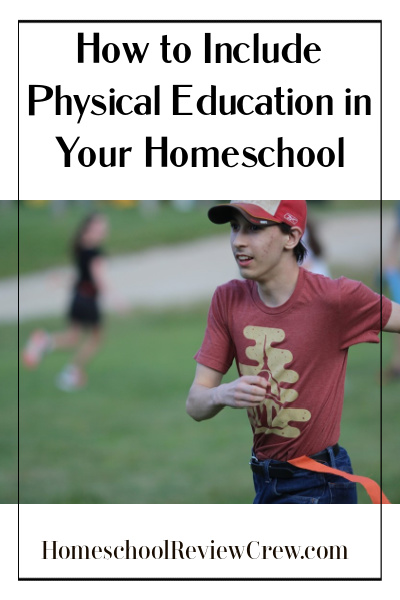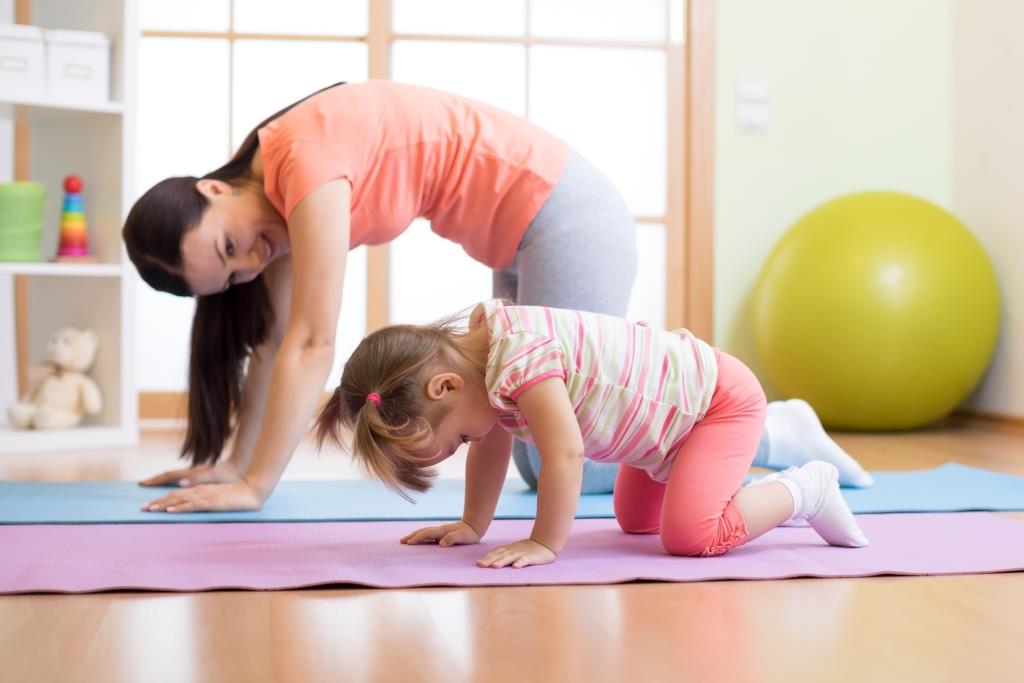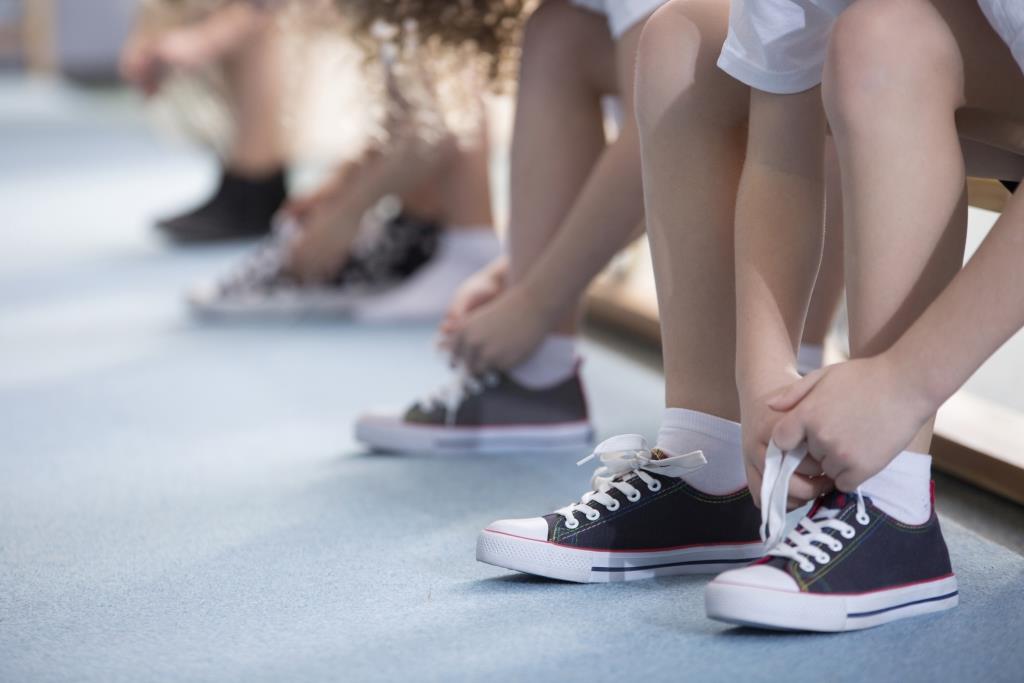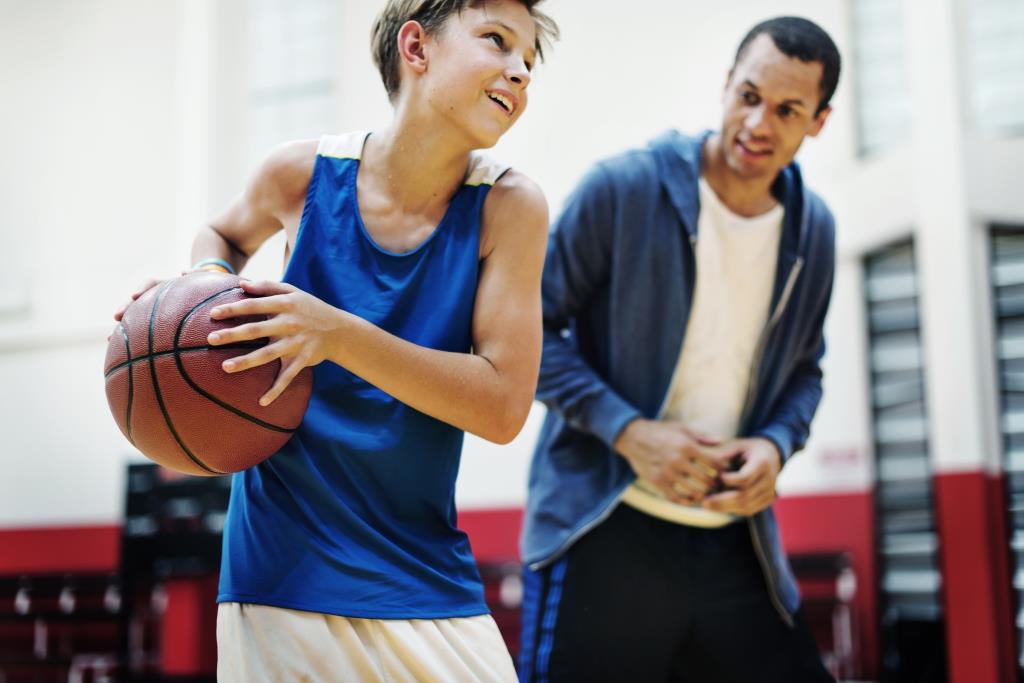In most states, Physical Education is a requirement for high school graduation. This can be challenging for many homeschooling families. With a little creativity homeschoolers can easily find options that will enhance your child’s physical activity and fulfill the requirements.
If the idea of “teaching” phys ed is overwhelming, take a few minutes to consider the benefits of physical education. This will help motivate you and and your family. Physical activity and exercise build strong bones, tone muscle, strengthen lungs and heart. It boosts the immunity system and improves mood.

How can a homeschooling mom accomplish all this with her children? It seems overwhelming, but really it is simple and does not demand a lot of time or equipment. You do not have to copy gym class or team sport-basedlessons at home. Physical education can be adapted to your family’s circumstances, preferences, abilities and interests.
For a successful physical education program, there are a few things to consider.
- Be consistent. Whatever you choose to do, commit to seeing it through. Decide if you should take time daily, or if 2-3 times per week is better.
- Make it fun. The goal is to get their bodies moving. Don’t put too much pressure on them – instead, encourage and inspire. Jump in and do it with them!
- Have the conversation. Talk with your children about what their bodies are doing, why their bodies respond the way they do. Do they notice an increase in energy? Have their moods and spirits improved? do they feel stronger? Discuss game rules and sports safety. Educate them on first aid and sports safety.
- Be flexible. Work with your family. Choose activities and programs that work for you and your family. Introduce a sport and give it a try, but if it is too much for your children or brings tears, consider something else. If you have purchased a program but find you are not implementing it, let it go and try something new.
- Be realistic. Do you really have time in your day to focus on a full-out weight training program for the whole family every single day? Will you actually leave the house each day to visit the park or trails? If yes, great! If not, be honest and seek out alternatives that will set you up for success.

Here are some easy ways you can include physical education in your homeschool routine.
Calisthenics
Who remembers lining up at the start of gym class doing jumping jacks, toe-touches. etc? Formal gym class is not necessary unless that’s your style, but the activities will get everyone’s blood pumping and heart beating. Make a list of these classic exercises and take a few minutes to get moving first thing in the morning, or right after lunch, or between times of seat work.
Individual Sports.
A large group is not necessary to be able to incorporate physical education into homeschooling. Golf, running, hiking, swimming, tennis, biking are all sporting-type activities that can be done either alone or with just a friend or sibling.
Team sports.
This could be any organized team sport like baseball. If team sports are your passion, there are community programs available in most areas. Check out local Parks & Recreation department or organizations like the YMCA.

Set a Goal.
Look for a 5K race or walk-a-thon in your area. Then make a plan to train and get in shape, ready to compete/complete the event together. Or set a goal for the number of minutes repetitions you want to do. Begin with a do-able number and increase a little each week until you reach a final goal.
Walk.
Whether you live in the country, city or somewhere between, there are ways to get out and walk. Walking is one of the best ways to improve your health. It’s free and no special equipment is required. All ages can enjoy the activity together. You can even walk indoors!
An Obstacle Course.
This is a fun way to get everyone active. Whether outdoors, or indoors you can create an engaging and challenging obstacle course using what you have available. Set out a large cardboard box for them to jump into or crawl through, leave a playground ball for bouncing from one end of of the yeard to the other, stretch a line of tape for them to walk along, jump into a hoolahoop, pull it up and wriggle around. Throughout the day, throughout the week this can be used to run off excess energy or break up lessons. Look over your house and yard for things like bean bags, cushions, game/sports equipment, steps and slides. Let them create an obstacle course for mom and dad!
Host a Field Day.
Students of all ages look forward to Field Day at the end of their school year. Why not hold one as a family? Make a list of old-fashioned field games and competitions. You might include the 100-yard dash, hop-skip-jump, and relay races. Add in long-time favorites such as egg toss and 3-legged race.
Visit the Playground.
The jungle gym and monkey bars at the neighborhood playground are perfect for gym class. Challenge your students to climb to a certain point, or cross a certain distance, then try again to better their performance. Use the open space to fun and jump. Walk the path around the park until you’ve covered a mile.
Use Technology.
Technology can be an option for physical education! Games are available for all the gaming systems that encourage physical activity – baseball, bowling, archery, you name it! Give your child a pedometer so they can count their steps. If they carry a cell phone, use the health apps to monitor activity and heart rate. You’ll find all sorts of video programs for purchase that walk you through a work-out program, martial arts or weight training. Search youtube for tutorials on any type of activity you are interested in and watch as a family.

Outsource Physical Education.
There are times when we need to look outside our homes to round out our children’s education. Phys Ed is one of those areas that may make sense to see outside support. Search for clubs, classes, or camps in your area that focus on activities your child is interested in.
Traditional Curriculum, Books and Resources.
There are many traditional programs available for homeschooling families. A quick internet search will give you several options. Curriculum publishers often have courses you can purchase. You may also find resources at the local library.
Dance Party.
Put on some music and move. It can be KidSongs, Contemporary Christian or Classical. Use a variety of styles and rhythms to encourage one another to move in a way that expresses the music. It will burn calories as well as strengthen muscles and limber up the joints.
Just Move.
Roll, jump, spin, move ! Stretch arms and legs, bend over backwards, lunge forward. Learn the rules for Mother-May-I, Red-Light-Green-Light and other playground games. Do the Hokey-Pokey or play Simon Says. Play tag or hide-and-seek Do something, anything that gets everyone up off the couch and away from their desks. Free-play where children use their own imaginations and creativity is the very best kind of physical education.
—oOo—
A big thank you to Linda Sears of Apron Strings & Other Things for writing this post


1 thought on “How to Include Physical Education in Your Homeschool Routine”